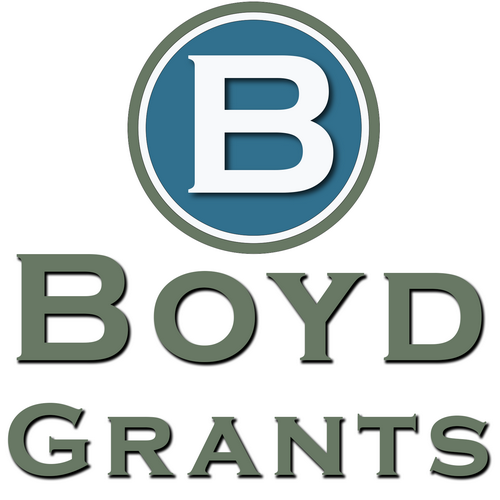When you hear the word grant application, what is the first thought that comes to your mind? Term papers from your school days? Writing and more writing? A series of endless questions organizations must answer?
Those are normal responses. Most individuals who are new to the grant world overlook one of the most important aspects of every grant proposal: THE BUDGET.
It’s not enough to simply see how much money you are requesting to implement your project or program. Funders want to see exactly how their funds will be spent, to ensure costs are allowable, allocable, reasonable, and necessary.
Federal Cost Principles
Both private (foundation and corporate) and public (federal, state, and local governments) funders have specific rules about what they will and will not fund. Some funders are happy to be for staffing costs. Others forbid such an expense.
In the federal funding landscape, federal cost principles are the overarching rules that govern how you can spend federal funds. You can find key regulations outlining allowable and unallowable costs in Subpart E of 2 CFR Part 200 (also known as Uniform Guidance, a document created by the Office of Management and Budget).
In subpart E of the Uniform Guidance, the OBM lists a variety of expenditures and details what they will and won’t fund. For example, in section 200.432 – Conferences, it is allowable to use federal funds to pay for “the rental of facilities, speakers’ fees, attendance fees, cost of meals and refreshments, local transportation, and other items incidental to such conferences unless further restricted by the terms and conditions of the federal award.” However, the guidance warns that “conference hosts/sponsors must exercise discretion and judgement in ensuring that conference costs are appropriate, necessary, and managed to minimize costs to the Federal award.”
Some sections are very straightforward. In section 200.423 – Alcoholic beverages, it states, “The cost o alcoholic beverages is unallowable.” Easy enough to understand: don’t spend your federal funding on alcohol.
Other sections require in-depth reading to ensure compliance. In section 200.421 – Advertising and Public Relations, one of the allowable advertising costs is for the “procurement of goods and services for the performance of the Federal award.” But an unallowable cost is the “costs of advertising and public relations designed solely to promote the recipient.”
To fully understand federal costs principles, specifically allowable and unallowable costs, read 2 CFR Part 200, Subpart E in its entirety.
Budget Components
Federal funders include two main cost categories in their budgets, no matter the budget format.
Direct costs are all the expenses tied directly to project activities. These expenses include personnel, fringe benefits, travel, equipment and supplies, contractual, and other direct costs.
Indirect costs are the shared organizational expenses. Some people call this overhead or administrative costs. Examples include rent/mortgage, utilities, accounting services, and general administrative services.
If you are a nonprofit that provides primary health care services to community members who do not have access to or cannot afford medical insurance, you might submit a grant application to fund a healthy living with diabetes education program. Examples of direct costs you might include in your budget are salary and benefit costs for a nurse practitioner, nutritionist, and exercise specialist to lead the programming. If you don’t want to hire employees (even part-time staff), you might instead hire consultants for these roles. Other direct costs could include healthy eating and exercise journals for participants, costs to advertise the event (on social media platforms and local radio ads), transportation vouchers for participants to reach your facility for classes, and glucose monitors and strips.
Indirect costs may include space within your nonprofit facility to hold the classes (which incorporates a portion of expenses related to your rent/mortgage, utility bills, technology costs, and more), staff time to oversee the grant, and a portion of your janitorial services to ensure space is clean.
Build Compliant, Defensive Budgets
The budget section of a grant proposal is where you tell your story in number form. Justify every expense in your budget. If you are paying a nutritionist $20/hour for 50 hours over the course of your program, those numbers should make sense. In your budget narrative, explain how $20/hour is a reasonable rate to pay for that role in your community. Detail the need or 50 hours of work – not just to teach the class but also prepare for the course and provide follow-up resources to participants.
Use realistic, well-researched estimates and explain all your assumptions and calculations. Back to the $20/hour rate. Where did you get that number? Did you get quotes from three nutritionists and that was the going rate for consultants? Did you look up the average costs for this line of work on the Bureau of Labor Statistics website?
Every expense should be aligned with a project activity. If you have included transportation vouchers in the budget, then you should have mentioned that transportation was a barrier to attendance in the needs section of the application and your process for providing transportation vouchers (how it works) in the activities/methods section of the application. Your budget is one piece of a linear story you are telling in your grant proposal.
Do not assume your budget is perfect. Conduct a final review that includes a double-check of each calculation and alignment with your narrative. You don’t want to have a budget line item that is not discussed anywhere else in your application. The best practice is to have a peer review your budget document for accuracy and understanding.
Understanding allowable grant expenses and recognizing the different components of a budget are the best steps for building accurate and compliant grant budgets, no matter who your funder is.
Written by Amanda Day


Recent Comments